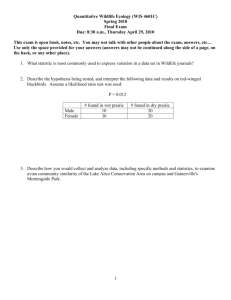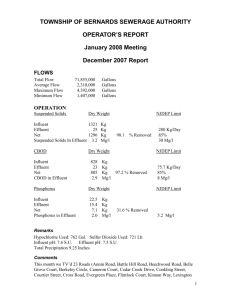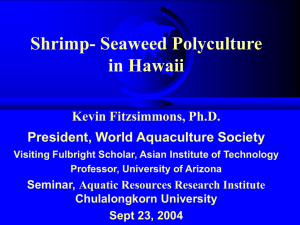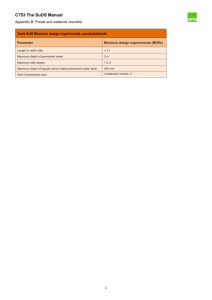Mass Balance Practice Problems
advertisement
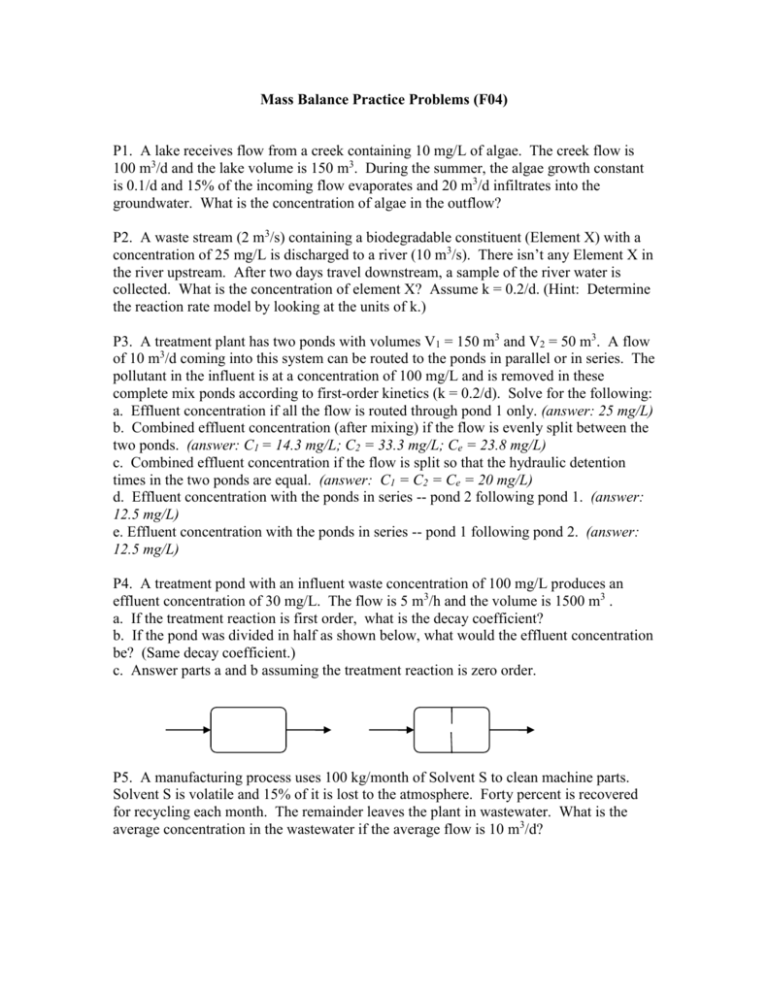
Mass Balance Practice Problems (F04) P1. A lake receives flow from a creek containing 10 mg/L of algae. The creek flow is 100 m3/d and the lake volume is 150 m3. During the summer, the algae growth constant is 0.1/d and 15% of the incoming flow evaporates and 20 m3/d infiltrates into the groundwater. What is the concentration of algae in the outflow? P2. A waste stream (2 m3/s) containing a biodegradable constituent (Element X) with a concentration of 25 mg/L is discharged to a river (10 m3/s). There isn’t any Element X in the river upstream. After two days travel downstream, a sample of the river water is collected. What is the concentration of element X? Assume k = 0.2/d. (Hint: Determine the reaction rate model by looking at the units of k.) P3. A treatment plant has two ponds with volumes V1 = 150 m3 and V2 = 50 m3. A flow of 10 m3/d coming into this system can be routed to the ponds in parallel or in series. The pollutant in the influent is at a concentration of 100 mg/L and is removed in these complete mix ponds according to first-order kinetics (k = 0.2/d). Solve for the following: a. Effluent concentration if all the flow is routed through pond 1 only. (answer: 25 mg/L) b. Combined effluent concentration (after mixing) if the flow is evenly split between the two ponds. (answer: C1 = 14.3 mg/L; C2 = 33.3 mg/L; Ce = 23.8 mg/L) c. Combined effluent concentration if the flow is split so that the hydraulic detention times in the two ponds are equal. (answer: C1 = C2 = Ce = 20 mg/L) d. Effluent concentration with the ponds in series -- pond 2 following pond 1. (answer: 12.5 mg/L) e. Effluent concentration with the ponds in series -- pond 1 following pond 2. (answer: 12.5 mg/L) P4. A treatment pond with an influent waste concentration of 100 mg/L produces an effluent concentration of 30 mg/L. The flow is 5 m3/h and the volume is 1500 m3 . a. If the treatment reaction is first order, what is the decay coefficient? b. If the pond was divided in half as shown below, what would the effluent concentration be? (Same decay coefficient.) c. Answer parts a and b assuming the treatment reaction is zero order. P5. A manufacturing process uses 100 kg/month of Solvent S to clean machine parts. Solvent S is volatile and 15% of it is lost to the atmosphere. Forty percent is recovered for recycling each month. The remainder leaves the plant in wastewater. What is the average concentration in the wastewater if the average flow is 10 m3/d?




